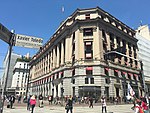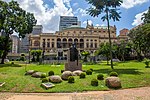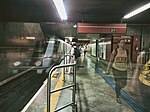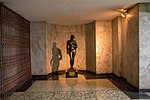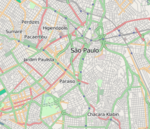São José Theater

The São José Theater (Portuguese: Theatro São José) was an important venue located in Largo São Gonçalo, now Doutor João Mendes Square, in the Brazilian city of São Paulo. Inaugurated on September 4, 1864, its first premises accommodated 1,200 people. In 1898, a fire destroyed the building and a new theater was erected next to the Viaduto do Chá.Designed by architect Carlos Ekman, the new venue had a capacity for 3,000 people and was inaugurated on December 28, 1909. The São José Theater, affected by the establishment of the Municipal Theater of São Paulo in 1911, remained active until 1919. Later, it was acquired by Light São Paulo, which used its facilities until 1924, when it was demolished to house the Alexandre Mackenzie Building, inaugurated in 1929.
Excerpt from the Wikipedia article São José Theater (License: CC BY-SA 3.0, Authors, Images).São José Theater
Rua Coronel Xavier de Toledo, São Paulo
Geographical coordinates (GPS) Address Website Nearby Places Show on map
Geographical coordinates (GPS)
| Latitude | Longitude |
|---|---|
| N -23.546666666667 ° | E -46.638611111111 ° |
Address
Shopping Light (Prédio da Light)
Rua Coronel Xavier de Toledo 23
01048-100 São Paulo, República (República)
São Paulo, Brazil
Open on Google Maps
